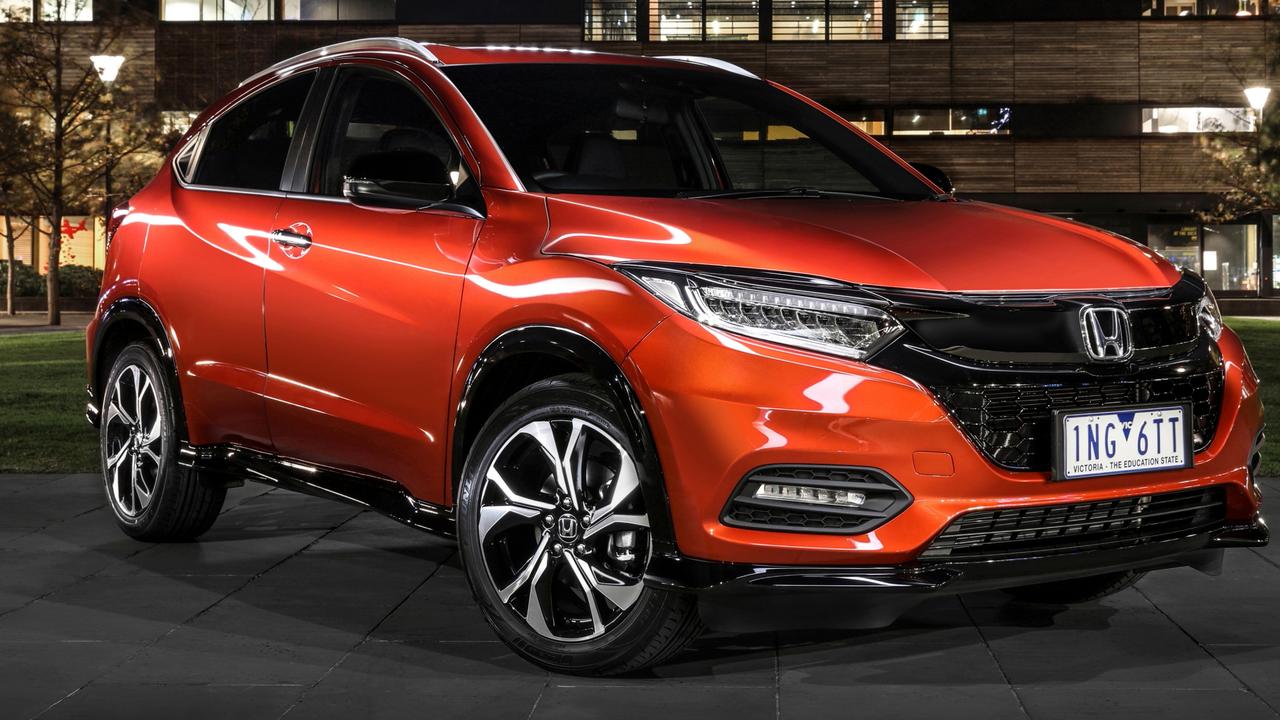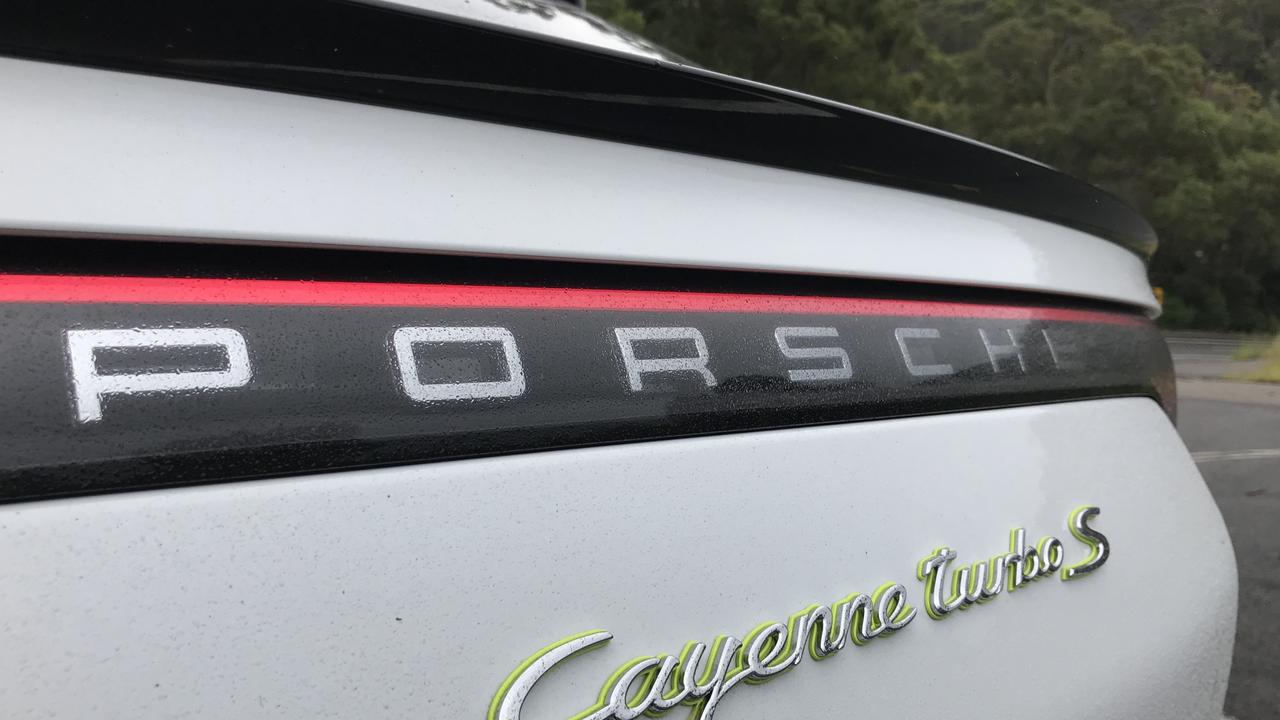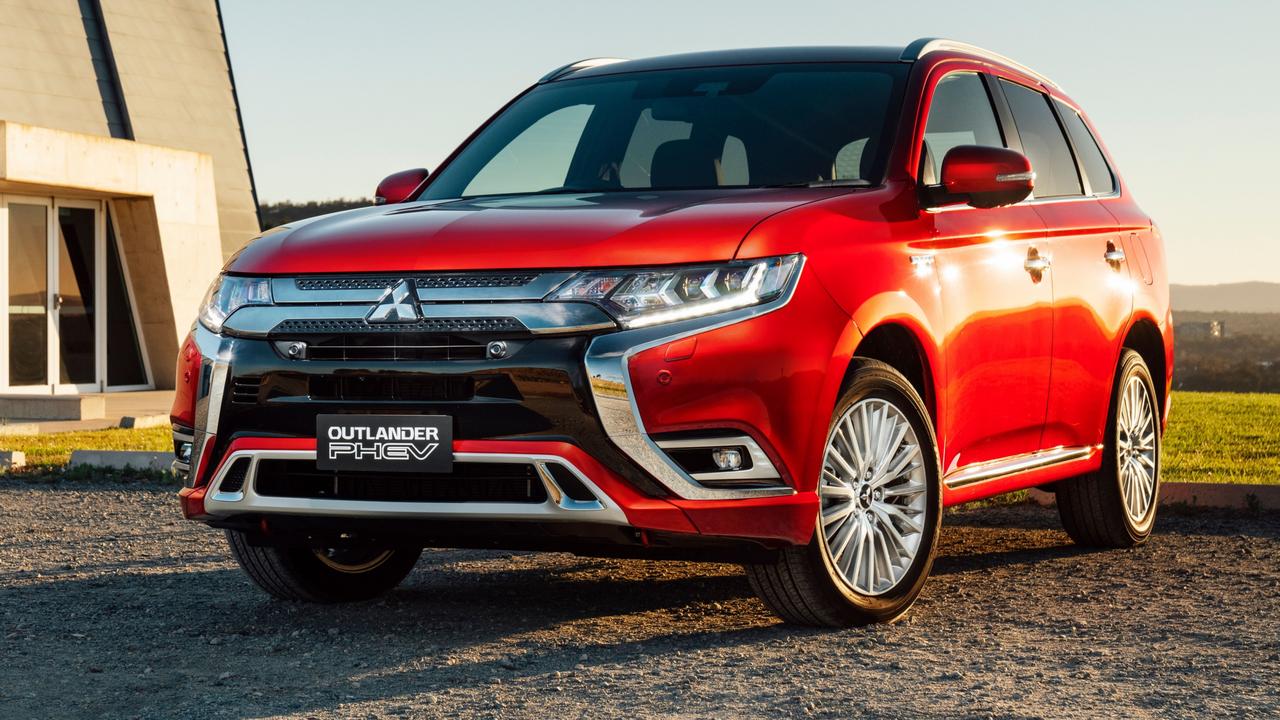Price cut gives Toyota Fortuner new ammo in off-roader battle
The Fortuner is a big, Toyota-tough seven-seat off-roader that carries the troops and gear capably into the bush — but it goes AWOL on safety equipment.
Toyota sold nearly twice as many vehicles in Australia in 2017 as market runner-up Mazda. It has now been the dominant automotive brand in this country for the past 15 years.
So it must be particularly galling for Toyota that the Fortuner, a four-wheel drive, seven-seater wagon based on the HiLux one-tonner, has been a monumental dud since its launch in 2015. The Fortuner is outsold more than five to one by the Prado, which leads the class.
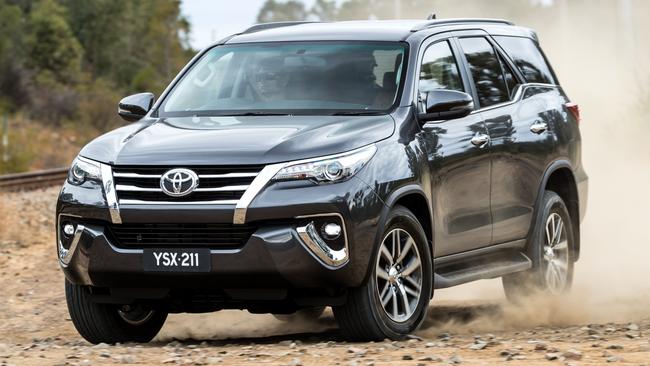
That wouldn’t necessarily worry Toyota but what would is the fact that in 2017 the Fortuner was also flogged by its direct rivals: Mitsubishi’s Pajero Sport, the Ford Everest and Isuzu MU-X. It also finished the year behind Holden’s Trailblazer and the oldest 4WD banger on the market, Mitsubishi’s Pajero.
Back of the pack is alien territory to Toyota so in late 2017 it took the axe to Fortuner prices.
VALUE
Each of the three Fortuner variants copped a price cut of at least $5000. The base GX six-speed manual was discounted by $5400 to $42,590, picking up 17-inch alloys (in lieu of steel wheels) and rear parking sensors to further sweeten the deal. The six-speed auto GX got the same price reduction and is now $44,590.
Mid-spec GXL manual was reduced by $5500 to $47,490; the auto we’re in today is now $49,490. It gains navigation, Toyota Link app-based services and digital radio. You can have the auto with leather and power front seats for an extra $2500. There are also keyless entry and start, roof rails, three 12V sockets, reverse parking sensors and tinted rear glass. Its infotainment will read your emails and messages and accept voice commands for audio and phone but still won’t talk to your smartphone via Apple CarPlay or Android Auto.
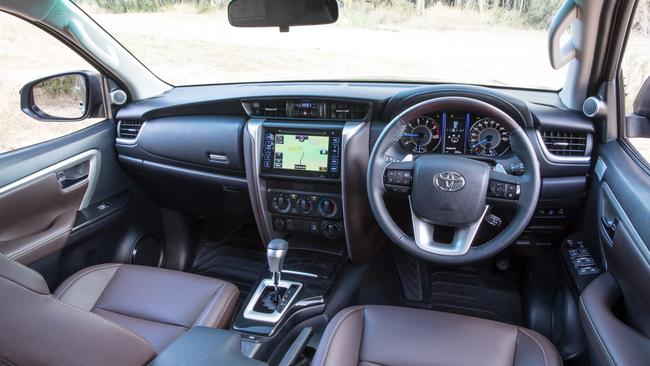
The range-topping Crusade automatic is $5000 cheaper at $56,900, with upgraded JBL audio, heated front seats and LED headlights.
So was the Fortuner overpriced in the first place? I didn’t think so — but your opinion counts, not mine, hence the drastic discounts.
Service intervals are short at six months/10,000km. Most rivals have a longer warranty.
COMFORT
Typical of converted one-tonner utes, the Fortuner wobbles around on bumpy roads and the ride, though absorbent, is quite fussy. It gets coil springs instead of leaf springs at the rear and softer suspension all round, so it’s more compliant than HiLux — as the Fortuner is still a heavy-duty 4WD, luxurious it ain’t.
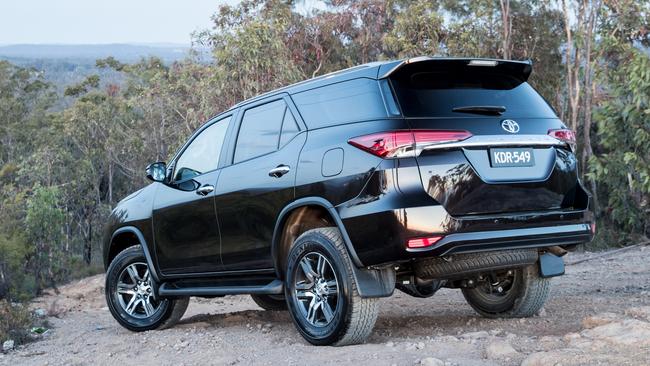
Minimal steering wheel reach adjustment means tall drivers will be cramped. Voice and steering wheel controls minimise the need to reach for the dreaded touchscreen. Storage includes a big centre console box and two gloveboxes, one chilled.
Middle row passengers sit high on a firm, comfortable 60-40 split bench with an adjustable backrest and plenty of legroom.
Both sides of the seat tumble forward easily for clear access to the two back stalls, which fold down from each side of the cargo bay and are OK for short trips with young kids.
Despite these seats eating into carrying capacity, there’s still ample load space and a low, easy to load floor, albeit with no tie down lugs.
SAFETY
Severely underdone here, the Fortuner has no driver assist tech such as automatic emergency braking, lane departure warning or blind spot monitoring. At least the curtain airbags extend to the back seats.
DRIVING
Fortuner’s 2.8 is a typical Toyota turbo diesel. Its torque is delivered with languid, long-legged ease, low in the rev range, so it’s stronger than it feels and should be able to tow up to 2500kg without strain. Maximum claimed towing weight for the auto is 2800kg; for the manual, it’s 3000kg.
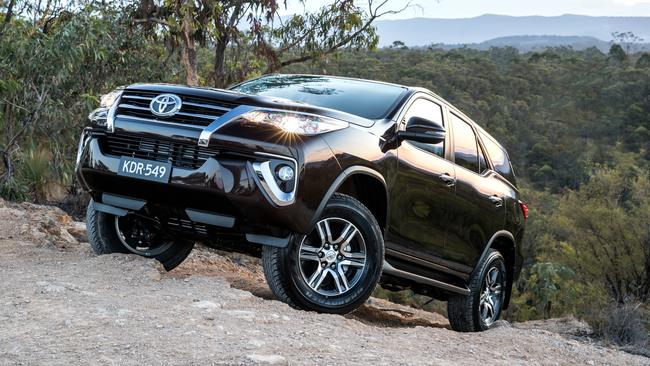
On the highway, you’ll get 7L-8L/100km; in town, expect 10L-12L/100km, a tad thirsty.
Fortuner’s part-time 4WD includes a dual-range transfer case, locking rear differential and efficient traction control. It’s a genuine off-roader and built for punishment, as you would expect from Toyota, though not quite up to the go-anywhere capability or specification as the Prado, or the 200 Series ’Cruiser.
Handling is fine on smooth surfaces and body roll is minimal but the suspension at both ends can occasionally be tripped by corrugations or potholes, causing quite serious instability that requires correction at the wheel.
Its hydraulic steering is fine around town but overassisted and completely devoid of feel at highway speeds. The brakes, while reasonably powerful, are slightly wooden and difficult to modulate in traffic.
HEART SAYS
I don’t want a namby pamby SUV. I want a real truck so I can take kids across the Simpson, up to Kakadu and to Fraser Island. One day …
HEAD SAYS
A genuine Toyota 4WD wagon, it’s bush fit out of the box. It’s almost half the price of a 200 Series and $14,000 less than an equivalent Prado.
ALTERNATIVES
MITSUBISHI PAJERO SPORT FROM $48,500 Seven-seater GLS, based on Triton ute, with a 2.4 turbo diesel/eight-speed auto. Five years’ warranty. Mitsubishi are demon discounters, so treat the price as an opening offer.
ISUZU MU-X FROM $48,000 Based on the D-Max ute, with a 3.0-litre turbo diesel/six-speed manual. Add $2100 for auto. Tough, economical, reliable and off-road capable. Five-year/130,000km warranty.
VERDICT
3.5 stars
The price cuts should put it on your test drive list and, if you want a fair dinkum 4WD, the Toyota badge is still blue chip. Skinny safety spec and short warranty are turn-offs.
TOYOTA FORTUNER GXL
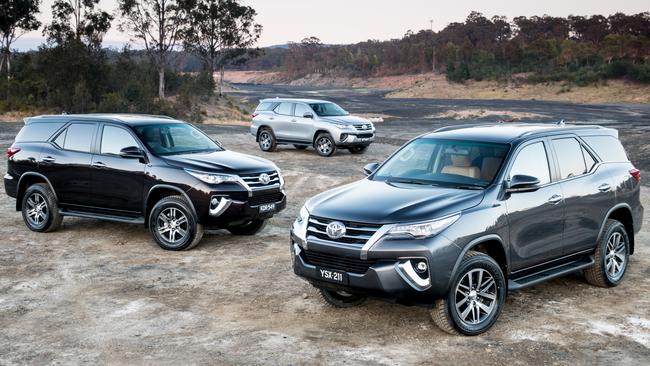
PRICE $49,490 plus on-roads (auto; good value)
SERVICING/WARRANTY $1440 over 3 years (average); 3-year warranty (short)
ENGINE 2.8-litre 4-cyl turbo diesel, 130kW/450Nm (average)
SAFETY 5 stars, 7 airbags, not much else (bad)
THIRST 8.6L/100km (above average)
SPARE Full-size (good)
CARGO 716L (as 5-seater; big)

